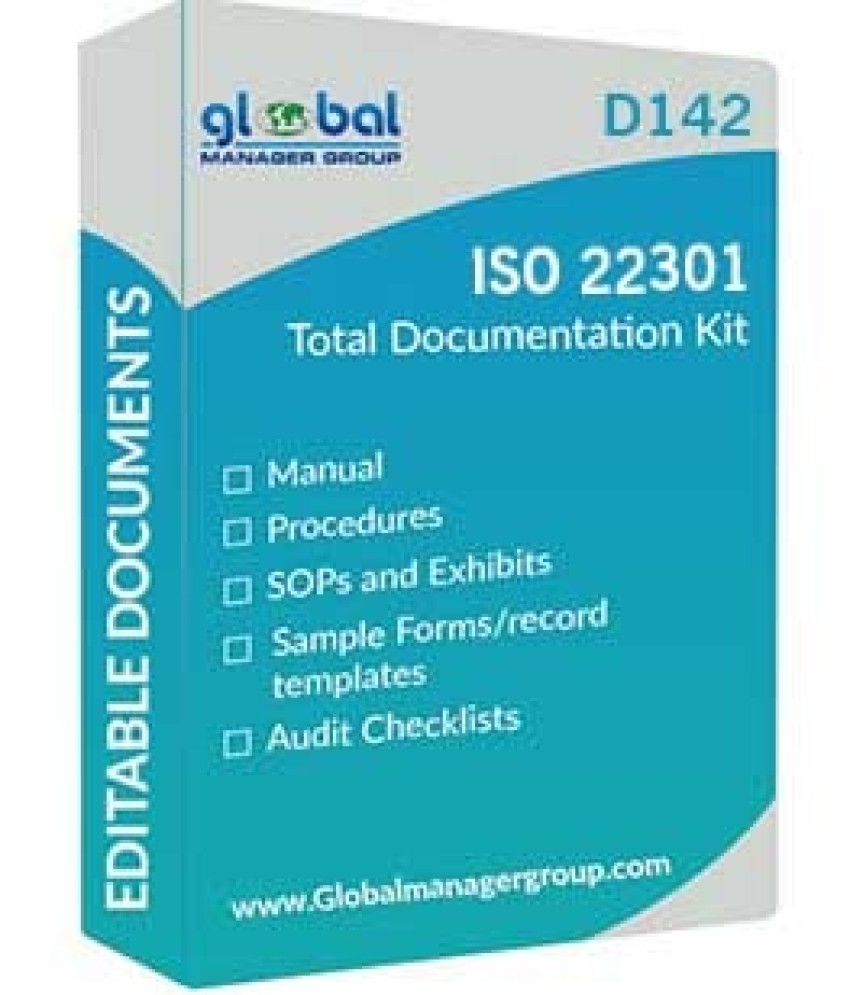
In an unpredictable business scene, the requirement for versatility has never been more basic. This article serves as your compass in understanding and executing ISO 22301 procedures and documents, the keystones of building a solid Business Continuity Management System (BCMS).
Understanding ISO 22301:
ISO 22301 is more than an acronym; it's a game-changer in the realm of business continuity. At its center lies a system planned to assist organizations in expecting, planning for, reacting to, and recovering from disturbances viably.
The Role of ISO 22301 Procedures:
ISO 22301 procedures are the mandatory documents that organizations needs to be documented to implement and maintain their BCMS. These strategies are direct to flexibility, coordinating businesses through the strategy of recognizing risks, making methodologies, and ensuring movement inside the confront of challenges.
Decoding ISO 22301 Documents:
Documents play a pivotal role in the ISO 22301 landscape. From policies and plans to records and reports, these documents provide the necessary structure and documentation to back the successful execution of the BCMS.
Key Elements of ISO 22301 Procedures:
The implementation of ISO 22301 procedures involves several key elements:
1. Risk Assessment and Management:
ISO 22301 procedures guide organizations in conducting a comprehensive risk assessment. This step includes identifying potential disturbances, surveying their effect, and prioritizing them based on severity. The goal is to create strategies for moderating these risks.
2. Business Impact Analysis (BIA):
A crucial step in the process, ISO 22301 procedures emphasize the importance of a detailed Business Impact Analysis. This includes understanding basic business functions, and conditions, and building up recuperation time objectives to prioritize recovery efforts.
3. Response and Recovery Plans:
ISO 22301 procedures guide the development of response and recovery plans tailored to identified risks. These plans outline precise actions to be taken during disruptions, ensuring a swift return to normal operations while minimizing the impact on the business and its stakeholders.
4. Documentation and Communication:
Clear communication is key to effective implementation. ISO 22301 procedures extend the significance of archiving all points of the BCMS, ensuring that information is readily open and justifiable. This engages communication and coordination amid emergency circumstances.
5. Training and Testing:
ISO 22301 procedures advocate for the training of personnel and regular testing of the BCMS. Training ensures that employees understand their roles and responsibilities, while testing, through drills and exercises, validates the effectiveness of the procedures in a controlled environment.
Navigating ISO 22301 Documents:
ISO 22301 documents are the backbone of procedural implementation. This article provides insights into the key documents required, from documents, training and testing. These documents create a comprehensive and standardized framework for BCMS management.
Navigating the Certification Process:
ISO 22301 procedures guide organizations through the certification process. Achieving ISO 22301 certification is a testament to an organization's commitment to business continuity and provides a competitive advantage in the marketplace.
Conclusion - Navigating Success through ISO 22301 Procedures:
In conclusion, a closer look at ISO 22301 procedures reveals their transformative impact on organizational resilience. By understanding and implementing these procedures, businesses can confidently navigate uncertainties, ensuring continuity and sustainability. This exploration serves as a valuable guide for organizations seeking to fortify their operations in an ever-changing business landscape.


